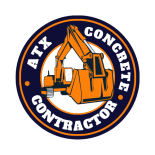Introduction
Imagine your home as a grand old tree. Just as the strength and health of the tree depend on the robustness of its roots, the stability and longevity of your home rest on the integrity of its foundation. Foundation issues can turn your safe haven into a precarious structure, threatening not only your investment but also your safety. In this comprehensive guide, we’ll dive deep into the world of foundation repair in the US, uncovering the most common methods, their significance, and how to spot the tell-tale signs of foundation distress.
- The Importance of Foundation Repair
- Common Foundation Repair Methods
- Crack Repair
- Underpinning
- Slabjacking
- Piering
- House Leveling
- Signs Your Foundation Needs Attention
- Key Takeaways
- FAQ
- Conclusion
The Importance of Foundation Repair
Why should the foundation of your home command your undivided attention? The answer lies beneath the surface. A compromised foundation can lead to a domino effect of structural issues, from cracks in walls and uneven floors to doors that won’t close properly. Ignoring these signs is akin to turning a blind eye to termites eating away at the wooden beams of your home. Foundation repair is not just about fixing a problem; it’s about preserving the integrity and ensuring the longevity of your home.
Common Foundation Repair Methods
The landscape of foundation repair is as varied as the homes that dot the American countryside. Each method is a tool in an extensive arsenal, deployed based on the specific ailment afflicting your home’s foundation.
Crack Repair
Like the delicate threads of a spider web, cracks in your foundation can seem inconsequential at first glance but can signify deeper structural issues. The most direct approach to mend these fractures involves epoxy injections or hydraulic cement, sealing the cracks and warding off water intrusion.
Underpinning
When the ground beneath your home proves to be as unreliable as shifting sands, underpinning comes to the rescue. This method involves extending the foundation to more stable soil layers deep underground, providing a firm footing for your home through concrete piers or steel pilings.
Slabjacking
Imagine your foundation as a sinking ship. Slabjacking is the lifeboat that elevates it back to safety. This process involves pumping a grout mixture beneath the slab to raise it back to its original position, correcting issues of uneven settling.
Piering
Piering, or piling, is the act of installing support deep into the earth to lift and stabilize your home. Think of it as giving your home a pair of sturdy stilts to stand on, ensuring it remains level and secure despite the shifting soils below.
House Leveling
Over time, your home may begin to slouch like a weary traveler. House leveling is the process of bringing it back to its upright posture, ensuring that floors are flat and stable, and doors can swing freely.
Signs Your Foundation Needs Attention
How do you know if your home is crying out for foundation repair? Here are the silent whispers you should heed: – Cracks on walls, especially over doors and windows – Doors and windows that stick or won’t close properly – Sloping floors or stairs – Gaps between wall and ceiling or floor – Water intrusion in the basement
Key Takeaways
– **Foundation repair is critical** for the safety, integrity, and longevity of your home. – **Various methods** are available to address different foundation issues, including crack repair, underpinning, slabjacking, piering, and house leveling. – **Early detection** of signs can prevent more severe and costly repairs down the line.
FAQ
How often should I inspect my foundation?
Annual inspections are recommended to catch any potential issues early.
Is foundation repair covered by homeowner’s insurance?
Coverage varies by policy, but most insurance plans do not cover repairs due to normal settling or wear and tear.
How long does foundation repair last?
With proper maintenance, most foundation repairs can last a lifetime.
Conclusion
In the grand tapestry of homeownership, foundation repair is a thread that cannot be ignored. Just as a tree relies on its roots for nourishment and stability, your home depends on its foundation to stand tall against the elements. By understanding the common methods of foundation repair, recognizing the signs of distress, and acting promptly, you can ensure that your home remains a safe and stable haven for generations to come. Remember, the foundation of your home is not just the concrete slab or the basement walls; it’s the bedrock of your family’s safety and security.
